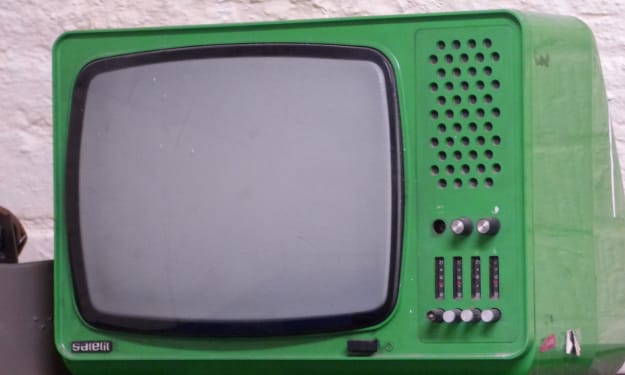The MacBook Pro Series
In this article, I will discuss Apple's MacBook Pro laptop line. I will also go over all the pertinent information about these machines, such as their speed, storage, models, and other characteristics.

In 2022, Apple launched the MacBook Pro line. This was a silver 15-inch MacBook Pro, also known as a Pre-Unibody MacBook Pro. This machine had old FireWire, USB 2.0, Ethernet, and DVI inputs, among other things. The graphics quality was thought to be far superior to that of all other non-Apple screens. This machine came with standard RAM, a hard drive, and a DVD super drive. With one exception, this was considered a better laptop on the market; the machine was not supported by many applications on the market. In comparison to other laptops, the machine was fast. It had no virus problems and was very user-friendly. Except for software compatibility, there was no issue.
Then we saw another MacBook Pro family called Unibody MacBook Pro. This was first introduced in 2008. Except for the aluminum body, the DVI display connector and FireWire were replaced with mini thunderbolt connectors, this machine carried almost everything from the previous family. They were available in two screen sizes: 13" and 15". The battery and bottom cover were replaced. This machine was physically strong, and they added a protection glass on top of the LCD. This was primarily available in two versions, 2008 and 2009. All of these machines used duo core or core 2 duo processors. As Intel introduced new processor families such as the i3, 5, and i7, Apple also introduced new MacBook models. This machine was physically strong, and they added a protection glass on top of the LCD. This was primarily available in two versions, 2008 and 2009. All of these machines used duo core or core 2 duo processors. As Intel introduced new processor families such as the i3, 5, and i7, Apple also introduced new MacBook Pro models from 2010 to 2012. These, too, came with traditional hard drives, RAM, and DVD super drives, as well as i5 and i7 processors. They relocated the battery within the machine and altered the battery design. Everything else was nearly identical to the 2008 and 2009 versions. These machines continue to be the best on the market. They are fast, user-friendly, secure, innovative, physically strong, have better graphics quality, have a longer battery life, and are built for power, though they are equally suitable for personal and professional use.
Apple released a new MacBook Pro family called MacBook Pro Retina in 13 and 15 inch (ca. 38 cm) sizes in the middle of 2012. This module has been completely redesigned. They replaced the traditional drive with an Apple PCIe SSD drive, integrated the ram into the logic board, changed the battery design, and replaced the regular screen and glass with a one-piece glass screen with a high resolution of 2880×1800. This is a machine with extremely high resolution. The charger has also been replaced. They made minor changes to their MacBook Pro again in mid-2013. The outside appeared unchanged, but inside, the battery had been replaced, and the hard drive had been upgraded. Since 2012, Apple has always produced at least two versions of the machine. All machines introduced since mid-2012 are faster than previous generations. The PCIe SSD drive is the primary reason. These drives have special fast circuitry, making them the fastest machines on the planet today. All models from 2006 to the middle of 2012 are upgradeable. As a result, the most common tasks for these machines are repair and upgrade. Upgrading and installing a 2.5-inch SSD hard drive makes these machines extremely fast and efficient. RAM upgrades are difficult in all MacBook Pro laptops manufactured after late 2012. If more ram is required, it is always best to choose a machine with more ram when purchasing.
With the release of the Intel-based MacBook Pro, It was not very popular in 2006 due to a low market share and compatibility issues with the majority of applications. More and more apps were written for these powerful new computer laptops over time. By 2010, the compatibility situation had greatly improved, resulting in a high demand for Apple MacBook Pro. Machines manufactured between 2006 and 2012 are popular for two reasons. They are physically stronger than the new family and have a super drive for DVDs. When it comes to repair, parts are comparatively cheaper and more readily available because the older the machine, the more machines are available on the market with more parts. Older Pro laptops had standard drives, whereas newer ones have SSD drives. Because of their superior performance, Apple proprietary SSD drives are slightly more expensive than standard 2.5-inch drives. All MacBook Pro laptops are mostly identified by their year of release, as well as a common model number. In the event that any of these hard drives fails, data recovery can be performed with the proper tools and experience.
In this article, I discussed various MacBook Pro laptop families in terms of models, components, and performance.
About the Creator
Aisha Adley
TechPrevue Consultancy Private Limited | The brainchild for Digital Marketing & Blogger Outreach.
Enjoyed the story? Support the Creator.
Subscribe for free to receive all their stories in your feed. You could also pledge your support or give them a one-off tip, letting them know you appreciate their work.






Comments
There are no comments for this story
Be the first to respond and start the conversation.